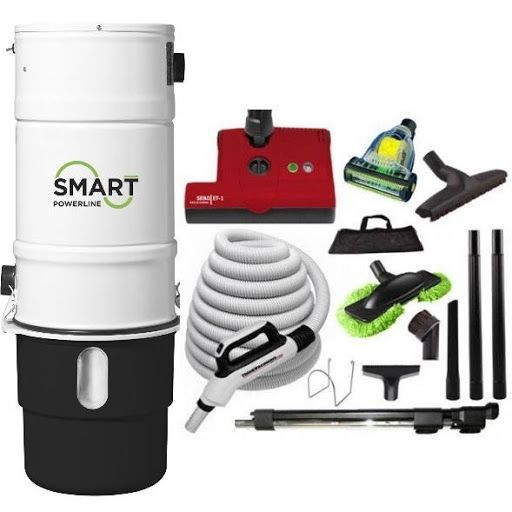Central Vacuum System Parts
When you are thinking about replacing your old central vacuum unit because it is not working effectively, you should consider replacing the malfunctioning central vacuum parts. Central vacuums tend to be pretty simple when it comes to parts and accessories. Notably, the only moving part on the power unit is the central vacuum motor. The other components are strictly electrical.

Therefore, it is cheaper to replace a central vacuum's components rather than replacing the whole thing. Nonetheless, it is recommended to change out the unit if it is very old. Typically, a new unit's price includes a new warranty that covers all the near future costs that you would incur on a unit that does not have a warranty at all.
It is worth noting that some central vacuum parts break more than others. However, when a unit does not turn on, it is usually either the PC board or the central vacuum motor. The PC board is the printed circuit board and is located in the unit housing. It usually comprises the power unit relay that is hooked up to the high voltage and connected to the motor. A short circuit in the central vacuum PC board can result in a disruption in the power and shut off the entire system's suction.

If the central vacuum motor is the faulty part, then it is going to be much costlier. Central vacuum motors can account for up to half the cost of most central vacuum systems. That is because they are commercial quality and provide all the suction power for the unit. It is not recommendable to test the motor yourself. You should engage a handyman or take your central vacuum to a vacuum shop to get it tested to see if the motor is the problem. If all goes bad and the central vacuum motor is the cause, you can replace it easily by opening up the central vacuum unit.
Other central vacuum parts that may become faulty include the central vacuum hose, central vacuum powerhead, and all the individual parts that go along with these accessory kits. Usually, the central vacuum hose and powerhead take the most wear and tear of all the parts in a central vacuum system. They are used weekly and are commonly bumped around and smashed up against furniture and walls. An example of where a part can break is in the powerhead. Even though beam central vacuum systems are among the top quality brands available, even their parts can break because of wear and tear.
References and resources
Central Vacuum Parts that may become Faulty




Log In
Create New Account